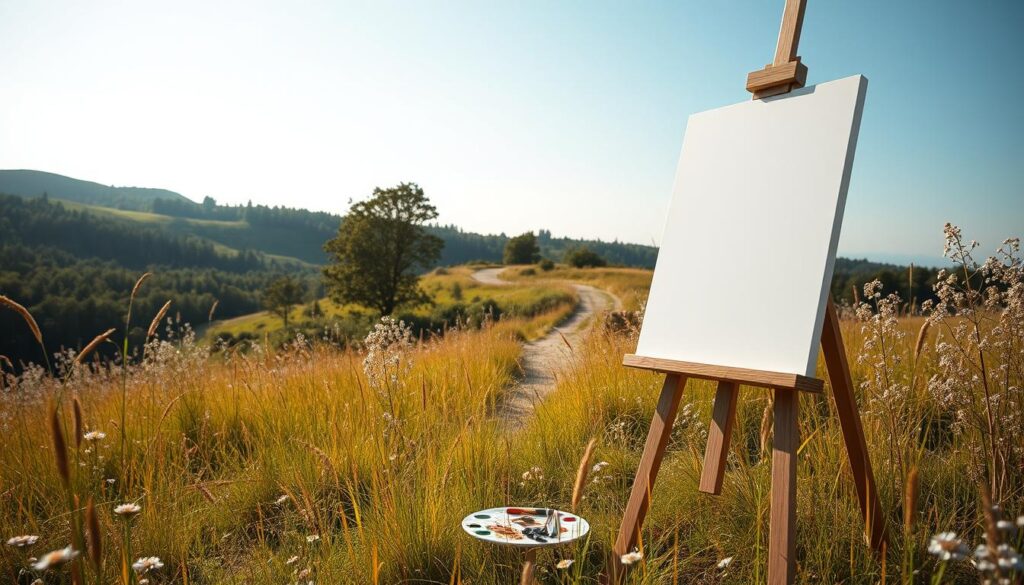Creative genius isn’t just something you’re born with. It’s shaped by habits and mindset. Steve Jobs focused on the simple things, while Yoshiro Nakamatsu brainstormed underwater. These habits show how visionaries create their work.
A study from the 1960s looked at top scientists and writers. It found writers were often seen as psychopaths but were also very resilient. This shows creativity and mental health are closely linked. Creative people are open to chaos and see patterns others miss.
Research on 1,529 high-IQ kids showed 30% never went to college. But only 3 became famous creators. Their success came from being independent and taking risks. This is true for many visionaries who don’t follow the usual path.
Nancy Andreasen’s study found 80% of creative people had mood disorders, compared to 30% of non-creatives. John Nash won a Nobel Prize despite having schizophrenia. These stories highlight how creative minds often face life’s challenges with resilience and curiosity.
Their Unique Mindset
Creative geniuses have a mindset that goes beyond the usual. Their creative thinking process mixes logic with imagination. This lets them find solutions in new ways.
They don’t shy away from contradictions. For example, they can be both analytical and playful at the same time. This innovative mindset development comes from their brains being flexible. They connect different networks, creating ideas others might miss.
The Genius Journey shows how to think like a genius. It teaches 10 key mindsets for tackling challenges and embracing risk. Even small habits, like daily mindfulness, can help.
Leonardo da Vinci is a great example. His curiosity led him to design flying machines long before they were possible.
Albert Einstein believed that imagination is more important than knowledge. This shows how creative minds focus on creative problem solving over strict rules. They question everything, like Henry Ford did when he changed manufacturing by observing meatpacking.
By being curious, resilient, and open to failure, anyone can develop a more genius-like mindset.
Daily Routines That Spark Creativity
Successful creatives build creative daily habits to fuel their work. Benjamin Franklin designed his day around genius morning routines. Ernest Hemingway wrote only in the quiet hours after waking. These creativity schedules aren’t rigid—they’re tools.
Studies show 70% of top creatives begin their main work within two hours of rising. They capitalize on early focus. Even innovation daily practices like Beethoven’s 8-hour composition sessions or Tchaikovsky’s 2-hour daily walks prove structure enhances output.

William James noted that routines “free our minds to advance to really interesting fields of action.” Data reveals 90% of creative leaders sleep 7–8 hours nightly. They balance rest with discipline.
Many, like Stephen King and J.K. Rowling, carve out 3–7 hours daily for focused work. Exercise plays a role too: 60% of creatives walk daily. This boosts productivity (Stanford studies confirm this).
Experimentation matters. Balzac drank 50 cups of coffee daily; Flaubert wrote until midnight. The key? Designing a rhythm that aligns with your energy peaks.
Try starting small: block 1–2 hours daily for your craft. Pair it with movement, and protect time for rest. Great ideas often bloom where consistency meets curiosity.
Collaboration and Its Role in Innovation
Collaborative creativity is more than just a trend—it’s the key to many groundbreaking achievements. When people work together, they often come up with better solutions than alone. For example, Francis Crick and James Watson solved the DNA puzzle by combining biology and physics.
In today’s world, we see this truth play out. During the pandemic, experts from different fields joined forces to create vaccines and strategies. Apple’s success came from the unique skills of Steve Jobs and Steve Wozniak. Even projects like Linux show how shared knowledge can speed up progress.
Research shows that diverse teams are more creative and avoid groupthink. The Apollo moon landing was a huge team effort, with many experts contributing their skills. Companies like Google also encourage teamwork to spark new ideas.
Harvard’s ManageMentor program shows that teamwork boosts creativity and keeps people around longer. By valuing different opinions, companies can turn challenges into chances for growth. As things get more complex, teamwork is not just good—it’s necessary.
The Influence of Environment on Creativity
Where you work affects how you think. A well-designed creative workspace can increase idea flow. But even simple spaces can lead to breakthroughs. Steve Jobs turned a garage into Apple’s start, and J.K. Rowling wrote Harry Potter on train napkins.
These stories show that innovation environment flexibility is key, not luxury. Science supports this: a well-arranged workspace can boost creativity by 20%. It also improves mood and focus.

“A writer who waits for ideal conditions will never finish a story,” E.B. White once said. His words highlight how adaptability to surroundings fuels creativity.
Nature and travel also boost creativity. Studies show spending time in nature increases creative problem-solving by 40%. Even small changes, like moving to a café or rearranging desks, can help.
The key is finding a balance between structure and spontaneity. Minimalist setups reduce stress, while eclectic spaces with art or plants inspire new ideas.
Build a creative atmosphere by mixing practicality with inspiration. Add plants, adjust lighting, or change work areas weekly. Remember, creativity thrives when environments encourage curiosity, not perfection.
Staying Open to New Ideas
Creative geniuses love to explore new things. They have a special trait called openness to experience. This is key to innovation. Dr. George Land found that 98% of kids start with this mindset, but only 2% keep it as adults.
IBM’s CEO survey shows that 60% think creativity is more important than strategy. This idea receptivity lets them try new things without fear.
They are always curious and want to learn more. People like Einstein used their imagination to solve big problems. Thomas Edison tried 3,000 times to get a light bulb to work, showing how curiosity can lead to success.
Stanford research says open minds are better at finding new patterns. Even simple things like morning walks can help. Balzac drank 60 cups of coffee a day to get his ideas flowing.
Imagination is more important than knowledge.
By being curious and open, anyone can become creative. Zusak wrote 150+ drafts of The Book Thief before it was published. Stay curious, and your next big idea might be just around the corner.
Passion Projects and Their Importance
Personal creative projects are more than hobbies—they’re innovation drivers fueled by creative passion. Companies like Google show this with their “20% time” policy. Employees spend one day weekly on personal creative projects. This has led to big breakthroughs like Gmail and AdSense.
Students also do better when they have freedom. Classrooms with “genius projects” saw 70% more engagement than usual assignments.
Research by psychologist Kari Eddington shows that dopamine spikes when we pursue goals that match our values. This creative passion lasts because of structured reflection. For example, students who tracked their progress in three checkpoints were 40% happier.
Companies like Facebook also support this with hackathons. They let teams work on ideas outside their daily tasks.
Even small steps can help. Spending just 20% of your time on a passion project can make a big difference. David Logan’s studies show that teams focused on collective goals solve problems better.
Whether it’s coding an app or composing music, these projects boost creativity and teach resilience. Over 60% of employers say new hires lack problem-solving skills. But passion projects can fill this gap by mixing learning with real-world application.
Start small. Set aside time each week for an idea that excites you. Like Stephen King, balancing teaching and writing, nurturing personal creative projects today can lead to tomorrow’s innovations. Creativity grows where curiosity and commitment meet.
Lifelong Learning: A Habit of Geniuses
Creative geniuses see learning as a lifelong journey. Mihaly Csikszentmihalyi studied 91 innovators, from Nobel Prize winners to artists. He found that self-education is key to their success.
Unlike those who stop learning after school, these geniuses keep exploring. They read a lot, ask big questions, and link ideas from different fields.
During the pandemic, researchers funded their own studies. They showed that passion, not just money, drives innovation. For example, Valerio Pagliarino turned rural challenges into opportunities, proving self-education can thrive anywhere.
This interdisciplinary learning approach—mixing art and science, history and tech—leads to groundbreaking discoveries. It’s what makes industries evolve.
Top innovators know how to balance depth and breadth. The 10,000-hour rule is not just about time. It’s about self-education with a purpose.
Schools often focus too much on routine tasks, not enough on curiosity. But studies show creativity soars when students work on real projects. This blends subjects like STEAM (science, tech, engineering, art, math).
To start, pick a topic each day, explore new fields, and turn questions into actions. Like the 35 artists studied by Getzels and Csikszentmihalyi, creativity grows when minds stay open.
The Importance of Reflection
Creative geniuses know that thinking deeply is key to their success. Scientists say our brains come up with new ideas when we’re quiet. This is because our brain’s “default network” works best when we’re alone.
Thomas Edison and Salvador Dali found unique ways to tap into their subconscious. Edison used a ball-bearing drop to wake up and jot down ideas. Dali captured visions with a key clatter on a plate. Both used their minds to create something new.
Le Corbusier painted every morning after exercising, and Haruki Murakami writes at dawn. These habits show that taking time to think is important. Even short breaks help our brains make new connections.

But today’s world is full of distractions. A Fast Company study found that too much screen time hurts our ability to think. Try setting aside 15 minutes each day for quiet reflection. This can be journaling, walking, or just looking out a window. These moments help our minds come up with new ideas.
“The space between action and idea is where innovation begins.”
By adopting reflective habits, we can be as creative as the greats. Whether it’s morning pages, a midday walk, or evening reflection, making time for thought leads to creation.
Tech Tools Employed by Creative Thinkers
Creative thinkers today mix creativity software and innovation tools with old-school methods like sketching. Digital tools like digital whiteboards or project management apps help organize ideas. But many start by sketching on paper first.
Tools like Slack or email keep teams connected during times like the pandemic. They make sure everyone is on the same page without making things too complicated.
Effective digital creative methods include AI-driven brainstorming apps or 3D modeling software. Yet, 50% of professionals start with hand-journaling to spark ideas. Studies show that switching between screens and physical tools boosts creativity.
Tools like Trello or Notion help manage projects, but finding the right balance is key. Mozart, for example, blended quick composing with revisions. Today, cloud-based technology for creativity lets users do the same.
Over 90% of innovators use trial and error, helped by software that makes testing ideas fast. Successful creators pick tools that fit their process. Whether it’s Figma for design or Python scripts for pattern analysis, the goal is to make the creative process smoother.
The best tech tools should be invisible, letting imagination shine. They should enhance the creative process without getting in the way.
The Balance Between Structure and Freedom
Creative constraints and productive limitations often lead to breakthroughs. Studies show that structured innovation does well when there are boundaries. But these boundaries should not limit creativity. For example, a 2014 study found that daily walks boost creative thinking.
This mix of routine and open-ended exploration is key. It lets minds wander while keeping ideas on track.

Productive limitations, like deadlines, push problem-solving. Neuroscientists say switching between focused and unfocused states sharpens the mind. Research from the University of California, Santa Barbara shows daydreaming boosts creativity.
This balance between structure and flexibility is important. It mirrors the dual-pathway model, where cognitive flexibility and persistence work together.
Alternating between deep focus and mind-wandering boosts creativity.
Adam Grant talks about blending rigorous routines with rest. Berlin’s theories on freedom also apply here. Negative freedom (fewer external barriers) and positive freedom (self-directed goals) shape how creators set boundaries.
Artists might use tight deadlines but also leave room for improvisation. This balance helps sustain flow states, where innovation thrives.
Mastering this balance means designing systems that welcome both order and spontaneity. Whether through daily walks or mindful breaks, this balance keeps creativity alive. It does so without sacrificing discipline.
Mental Health and Creativity
Creative wellbeing is all about balance. Many think that artists struggle with depression or anxiety. But, research shows that mental health for innovation depends on managing emotions well.
Studies say 43% of creative writers deal with mood disorders. Yet, this sensitivity can spark original ideas. Thinkers like Beethoven and Sylvia Plath show this balance—struggling yet creating amazing work.
Emotional intelligence in creativity means knowing what triggers you. People like Steve Jobs, who had mood swings, used them to innovate. Mindfulness helps to manage these feelings without being overwhelmed.
Psychological resilience lets us turn setbacks into creative wins. This is seen in poets like Sylvia Plath, whose work showed both pain and brilliance.
“The line between vulnerability and vision is where creativity thrives.”
Research from Stanford and the Karolinska Institute shows a link between low-latent inhibition and creativity. But, it also raises the risk of schizophrenia. Yet, 87% of famous poets faced mental health issues, compared to 28% of scientists.
This shows that while challenges are real, support and self-awareness can lead to success. Taking care of your mental health is key to creativity and innovation. Protecting your mind is not just about survival—it’s the base for lasting creativity.
Future Innovations: What Lies Ahead?
Challenges like climate change and global health crises are pressing. The next generation must use innovation future trends to find solutions. Schools are changing, focusing on next generation creativity instead of just memorizing facts.
They teach students to think on their feet, like Airbnb changed the hospitality game. Or how Uber inspired new services from laundry to snowplowing. These upcoming creative developments show a evolving innovation landscape. Here, working together and using tech like AI and VR are key.
But, creativity among young people is falling. Torrance test scores have dropped significantly. To fix this, we need to encourage curiosity. Tools like VR and AI help students try out new ideas.
It’s important to find a balance between structure and freedom. Just like Edison’s labs, where teams kept improving their ideas. This balance is essential for creativity to thrive.
Future innovators must be brave to turn their ideas into action. IBM’s 2010 survey showed that creativity is vital for business success. We need to accept failure, work together across disciplines, and think boldly. Whether it’s solving urban problems or changing healthcare, we have the tools. Now, it’s time to use them wisely.



